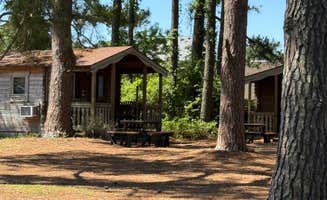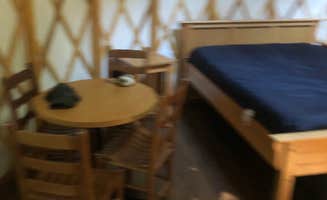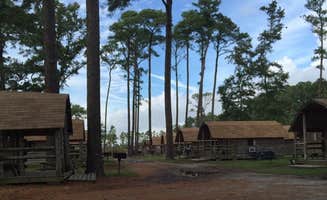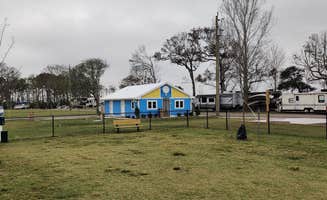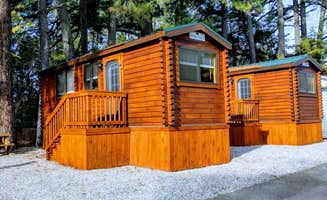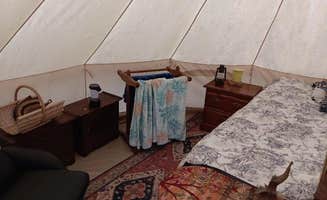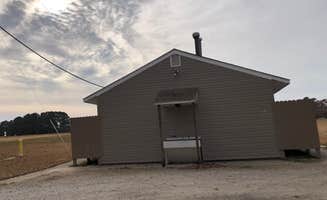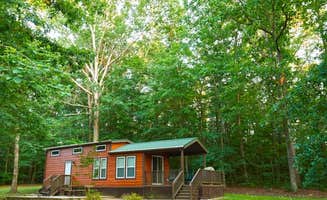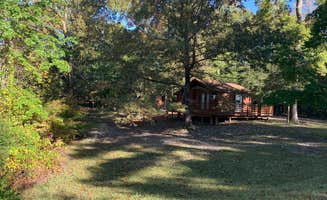Chesapeake Bay area yurt camping provides water-oriented experiences with access to both calm bay waters and Atlantic coastal environments. The region maintains moderate temperatures throughout spring and fall camping seasons, with summer humidity levels requiring adequate hydration and cooling preparations. Sites across Virginia Beach and Cape Charles feature sandy terrain with minimal elevation changes, making for easy campsite setups.
What to do
Kayaking and fishing: First Landing State Park Campground offers direct water access for anglers and paddlers. "The camp ground is beautiful and the people are friendly. Our game ground was surrounded by the forest but your in walking distance to the beach," notes Timothy B. Nearby waterways provide diverse fishing opportunities within 10-minute walks from most campsites.
Beach access: Many Chesapeake Bay campers appreciate the less crowded beach areas compared to main tourist destinations. "The beach is more secluded and you're close to all the activities that Virginia Beach has to offer," shares Timothy B. about First Landing. Some beaches feature gentle waves ideal for families with small children.
Hiking trails: Several park systems maintain interconnected trail networks. "First Landing is a great, family friendly campground for all to enjoy. Access to the beach is a plus, the park rangerd do their job well, and many great amenities are available," writes Tyler H. Most trails range from 1-5 miles with minimal elevation changes and interpretive markers.
What campers like
Spacious campsites: Kiptopeke State Park Campground receives positive feedback for its layout. "We use the park as a base for exploring the barrier island on the ocean side by kayak," explains Stuart M. The tent camping areas offer more seclusion than RV sections, with 15-30 feet between sites in wooded areas.
Clean facilities: Multiple reviewers mention well-maintained bathhouses and common areas. "The bathhouses and shower houses are always very clean as well as the cabins," notes John H. about Holiday Trav-L-Park. Most campgrounds include regularly cleaned shower facilities with hot water available throughout the day.
Wildlife viewing: The coastal setting attracts diverse bird species and marine life. "Wild animals usually pass by often later in the evening, horses, deer, rabbits etc," reports Gabby B. about Kiptopeke. Campers frequently observe waterfowl, small mammals, and occasionally deer near dawn and dusk hours.
What you should know
Weather considerations: Summer heat and humidity affect comfort levels at tent sites. "The campsites were ok. easy to get to. I wouldn't recommend tent camping in the middle of summer - my husband and i both got sick," warns Grace M. about First Landing. Temperature swings between day and night can reach 20-30 degrees during spring and fall.
Site flooding: Low-lying areas experience drainage issues after heavy rainfall. "This is a low lying area and standing water at some sites after heavy rains can be an issue," explains Tina C. about North Bayshore Campground. Sites closer to water bodies have higher flood risk, while elevated sites typically drain better.
Military proximity: Some campgrounds operate near military installations. "You may hear occasional machine guns and artillery. You will also hear reveille in the morning. It was not terribly bad," explains Nita D. Flight patterns from nearby bases create periodic aircraft noise at certain locations.
Tips for camping with families
Playground access: Family-oriented facilities include designated play areas. "There is a small playground in the campground area, but right next to the campground is a large play area that has a rock wall that our kids really loved playing at," shares The B. about Military Park Langley AFB Bethel Recreation Area. Most playgrounds cater to children aged 3-12.
Water activities: Swimming options range from pools to protected beach areas. "Great campground for couples or family. Beach is awesome, not crowded at all. We love it and visit every year," notes Barbara M. Many campgrounds offer water equipment rentals including paddleboards, kayaks, and fishing gear.
Educational programs: Check campground calendars for ranger-led activities. "We tent camped here over Labor Day weekend as our first family camping trip, and we all had such a good time! Our boys (8, 6, & 4) had so much fun on the big playground and paddle boating," writes Kimberly F. Program availability varies seasonally with most activities concentrated on weekends.
Tips from RVers
Full hookup availability: Several campgrounds offer complete utility connections. Sandy Bottom Nature Park features yurt accommodations as alternatives to traditional RV camping. "This is a beautiful 456 acre education and wildlife facility. Born from garbage dumps and it is great example of what can be achieved," notes N I. Many parks offer yurt options for those wanting to experience yurt camping in Greenwood, Virginia area without hauling an RV.
Site leveling: Terrain varies significantly between campgrounds. "The site was half gravel and half grass. The grading wasn't great and the gravel was thin. Lots of water puddles and the grass was swampy," mentions Rebecca E. about Holiday Trav-L-Park. Bringing additional leveling blocks proves useful even at sites marked as level.
RV size limitations: Some parks cannot accommodate larger rigs on all sites. "Large, private sites among really cool, bent trees," describes Adam and Suzanne B. about First Landing. Rigs exceeding 35 feet require calling ahead to confirm suitable site availability, especially during peak season when premium sites fill quickly.


